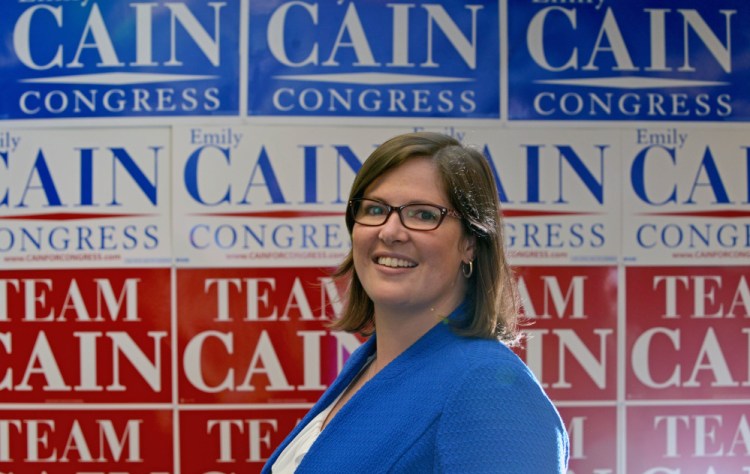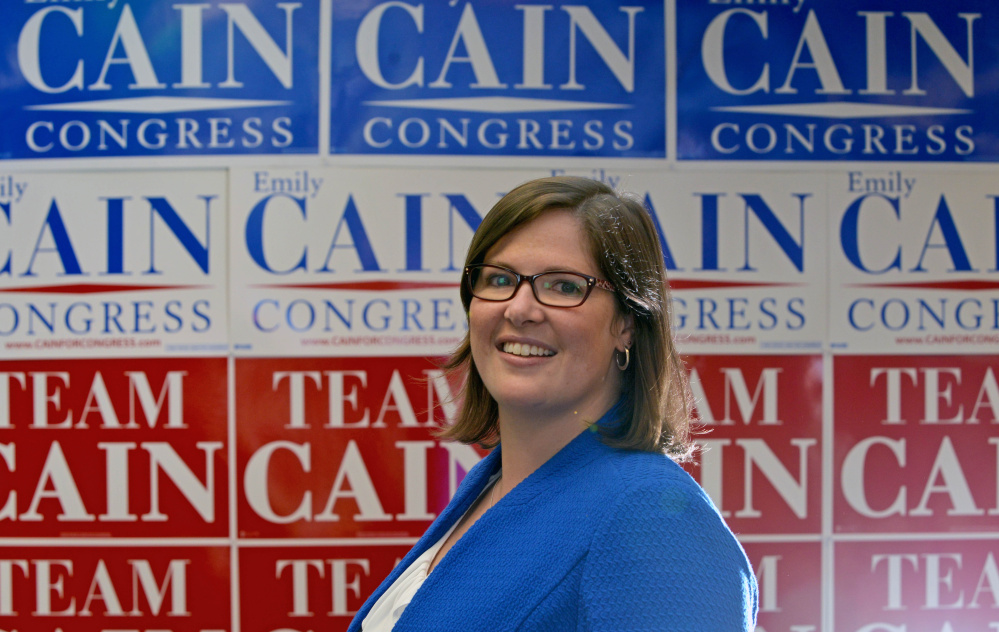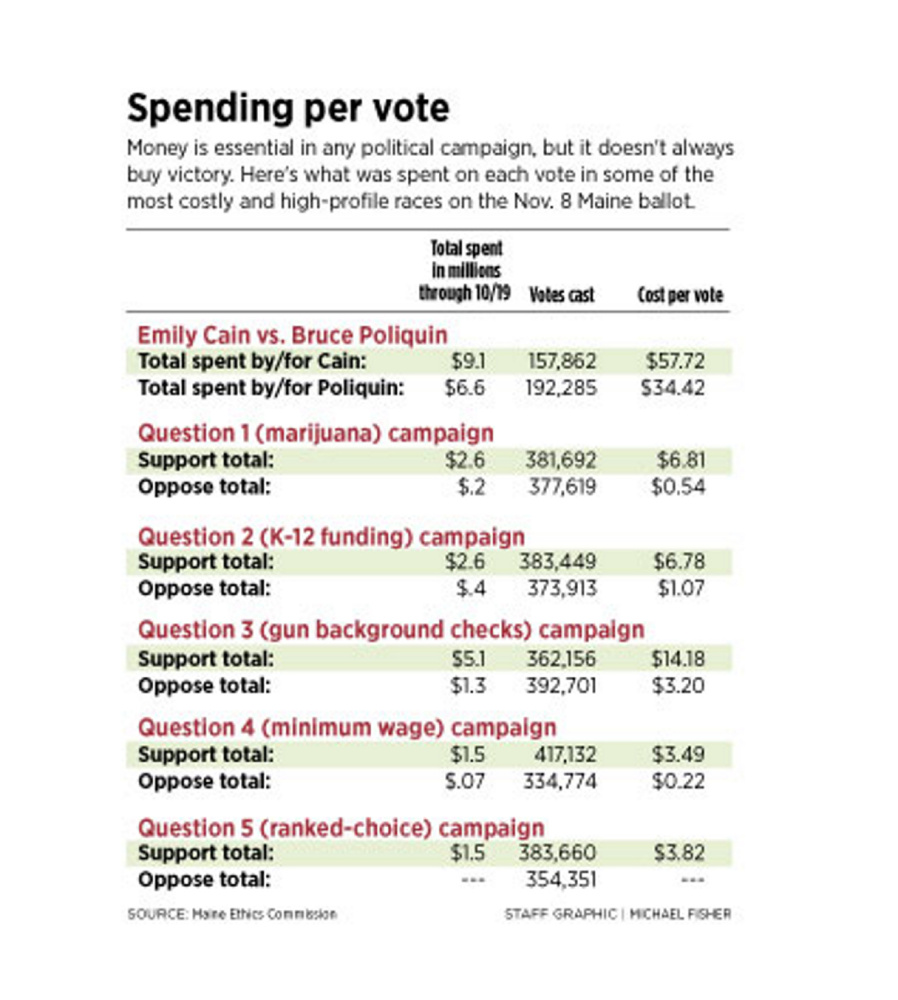Campaigns across Maine spent more than $40 million during the 2016 election, shattering previous records but also proving once again that big spending doesn’t guarantee wins at the ballot box.
The 2016 elections raised the ceiling for political spending in Maine as national organizations poured tens of millions of dollars into candidates and ballot issues. For instance:
• Total spending in Maine’s 2nd Congressional District race topped $15 million and generated more television ads than any House race across the country. Yet despite spending nearly $60 a vote – compared to $34 a vote by her opponent – Democrat Emily Cain and her allies failed to dislodge incumbent Republican Rep. Bruce Poliquin.
• Another $15 million was funneled into five ballot questions to legalize marijuana, expand gun background checks, raise the minimum wage, fund schools and change the way Mainers vote.
• The battle for control of Maine’s Legislature drew more than $10 million in spending, with some individual races exceeding $400,000.
“We haven’t ever seen the amount of spending that we saw in 2016, where we had this confluence of elections,” Anthony Corrado, professor of government at Colby College, said of the combination of a presidential election, congressional races and major ballot issues. “Therefore, we experienced the type of spending now being seen in other states where these (closely divided) races and these national issues are on the ballot.”
However, the 2016 elections also demonstrated that money isn’t everything in politics.

Republican incumbent Bruce Poliquin celebrates winning the 2nd District race – the most expensive congressional race in Maine history.
In two of the highest-profile campaigns – the 2nd District race and Question 3 over gun background checks – the side that spent significantly more money fell short on Election Day. The same goes for some of the most expensive legislative races.
In the battle over Question 3, which would have required background checks prior to private gun sales, supporters outspent opponents nearly 5-to-1 but still lost at the ballot box, by a margin of 52 percent to 48 percent.
Funded heavily by former New York City Mayor Michael Bloomberg’s gun control organization, Mainers for Responsible Gun Ownership and its allies spent more than $5.1 million through Election Day, according to an analysis of campaign finance reports filed with the state. That figure does not include the hefty sums spent last year to gather signatures to qualify for the ballot. The opposition, by contrast, spent nearly $1.3 million, more than $1.1 million of which came from the National Rifle Association.
Looking at those figures another way, the Yes on 3 campaign spent more than $14 for every vote compared to just $3 spent by the NRA and its Maine-based allies.
“They invested here, and they played to win,” David Farmer, campaign manager for Mainers for Responsible Gun Ownership, said of the NRA’s involvement after the election. “And so did we. But at the end of the day they were successful.”
MESSAGES, NOT MONEY, RESONATE
With more than $6 million spent by both sides in 2016, the Question 3 campaign appears to rank as the second-most-expensive ballot initiative in state history after the failed 2009 campaign to legalize same-sex marriage.
The other referendum questions on the 2016 ballot passed after campaigns that all saw in excess of $1 million in spending. Investments from supporters and opponents also were lopsided in those campaigns, although once again hefty spending did not translate into a sizable advantage come Election Day.
 Supporters of the Question 1 campaign to legalize marijuana for recreational use outspent opponents nearly 13-to-1 – $2.6 million to $204,000 – but ended up winning by only 4,073 votes. Opponents of legalized pot have formally requested a recount by the Maine Secretary of State’s Office.
Supporters of the Question 1 campaign to legalize marijuana for recreational use outspent opponents nearly 13-to-1 – $2.6 million to $204,000 – but ended up winning by only 4,073 votes. Opponents of legalized pot have formally requested a recount by the Maine Secretary of State’s Office.
The Question 2 campaign to increase K-12 funding via a tax surcharge on households earning above $200,000 passed by just 9,536 votes – out of 750,000 cast – despite supporters outspending opponents $2.5 million to $444,000.
And the campaign to increase Maine’s minimum wage to $12 an hour by 2020, which passed by the largest margin of the ballot measures, was supported by more than $1.4 million in funding. Opponents spent less than $100,000, according to an analysis of the most recent finance reports.
Campaigns ultimately succeed or fail based on whether their messages resonate with the majority of voters. In the case of Question 3, opponents tapped into rural Mainers’ skepticism toward gun control measures as well as resistance in the hunting community to the idea that they would need to pay for a background check before lending a rifle to a friend.
IN 2ND DISTRICT, ‘BROADER CONTEXT’
As anyone who watched television in Maine during the past two months can attest, the two candidates in Maine’s 2nd District race as well as groups aligned with either side weren’t subtle about making sure voters heard their messages.
Between Sept. 5 and Oct. 30, television stations aired 21,786 political ads – at an estimated cost of $7.1 million – focused on Maine’s 2nd District race, according to an analysis by the Wesleyan Media Project, a nonpartisan group that tracks ads aired by political candidates. That is more than any of the other House races across the country and reflected the intense – and unusual – national interest among the parties in the outcome of a race in rural Maine.
Cain, the Democratic Congressional Campaign Committee, and the progressive groups trying to bolster her purchased 3,790 more ads than Poliquin and the Republican groups backing his re-election campaign. Yet Cain, who was challenging Poliquin for the second time, picked up only 45 percent of the vote compared to 55 percent for the incumbent.
The 2nd District was the most expensive congressional race in Maine history. In terms of spending, Cain had spent $3 million as of Oct. 19 while Poliquin had spent $2.2 million, according to the campaigns’ most recent financial filings. But outside groups spent another $6 million in support of Cain while outside groups supporting Poliquin chipped in another $4.4 million.
Taken together, those equate to roughly $57.70 per vote for Cain and $34.40 per vote for Poliquin.
Michael Franz, a Bowdoin College professor who is co-director of the Wesleyan Media Project, said both sides obviously expected the 2nd District to be one of the closest races in the country. What Democrats could not control was the effect that Donald Trump’s candidacy and ballot issues such as gun background checks would have on the race. Trump handily won in the 2nd District – splitting Maine’s electoral votes for the first time – and Question 3 was defeated because of strong opposition in rural Maine.
“One of the things you can control is how much money you can raise, and (challengers) should raise more money than incumbents because data suggests that you need to outspend an incumbent in order to have good chances of winning,” Franz said. “But in this case, the broader context in the 2nd District tended to favor Republicans.”
BIG MONEY IN LEGISLATIVE RACES
Maine legislative races also drew hefty sums this year.
A preliminary analysis shows that candidates, the two major parties and political action committees spent more than $14 million on the races to fill all 186 seats in the Maine House and Maine Senate. However, that spending was not equally distributed across the state.
While many races involved hardly any spending, several reached six figures.
Democrats and their allies funneled more than $300,000 into the Senate District 16 race between incumbent Republican Sen. Scott Cyrway of Benton and Democratic challenger Rep. Henry Beck of Waterville, compared to $107,000 on the Republican side. Cyrway still won by a comfortable margin.
Likewise, Democrats spent more than $200,000 in the final weeks of the campaign to protect the Senate District 18 seat held by Sen. John Patrick, D-Rumford. Patrick lost to Republican Lisa Keim, whose campaign was helped by roughly $63,000 from the Maine Republican Party and outside groups.
Gov. Paul LePage, a Republican, also won his first campaign in 2010 and re-election in 2014 despite spending considerably less than all of his major opponents in both races.
“Spending large sums of money doesn’t necessarily mean the person who spent the most is going to win,” said Corrado, the Colby professor. “You reach a point where you are going to have marginal returns or all of this spending doesn’t have the desired effect.”
Send questions/comments to the editors.







Success. Please wait for the page to reload. If the page does not reload within 5 seconds, please refresh the page.
Enter your email and password to access comments.
Hi, to comment on stories you must . This profile is in addition to your subscription and website login.
Already have a commenting profile? .
Invalid username/password.
Please check your email to confirm and complete your registration.
Only subscribers are eligible to post comments. Please subscribe or login first for digital access. Here’s why.
Use the form below to reset your password. When you've submitted your account email, we will send an email with a reset code.